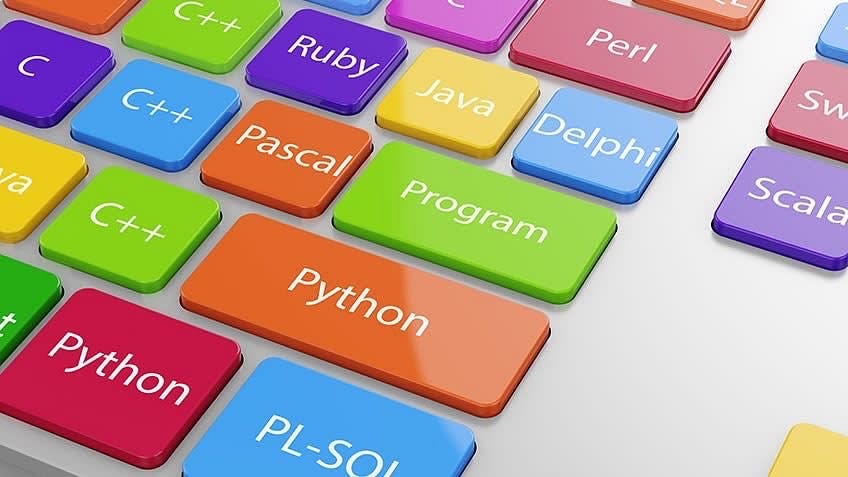It’s 2025, and the programming world is all about using the right tools for the job. Forget what’s trendy—what really matters is what works, what scales, and what saves time. Here’s a breakdown of the programming languages you should be using today to build reliable, modern applications.

Python has been a workhorse for years, and it’s not going anywhere. Whether you’re building backend systems, automating tasks, or working with data, Python is the kind of language that just gets things done. Its simplicity and massive ecosystem make it a favorite across industries.
Where to Use It:
• AI and Machine Learning: With TensorFlow, PyTorch, and Scikit-learn, Python dominates this space.
• Data Engineering: Tools like Pandas and Apache Airflow make Python a favorite for building and managing data pipelines.
• Web Development: Django and Flask are still go-to frameworks for building scalable web apps.
• Automation: From simple scripts to complex workflows, Python is perfect for automating repetitive tasks.
Rust has become the language of choice for high-performance, low-level programming. It offers the speed of C or C++ without the memory management headaches. If your project demands reliability and efficiency, Rust is a great pick.
Where to Use It:
• System Programming: Replace older C/C++ code in performance-critical areas like operating systems or game engines.
• Blockchain: Rust is a key player in blockchain development, with projects like Solana and Polkadot leading the way.
• WebAssembly: Rust is a favorite for building fast, secure web components with WebAssembly.
• Embedded Systems: It’s increasingly used for IoT and other embedded devices.
JavaScript is still the backbone of the web, and TypeScript has made it better with type safety and better tooling. Whether you’re building a dynamic frontend, an API, or even a mobile app, you can’t go wrong with this pair.
Where to Use It:
• Frontend Development: Frameworks like React, Vue.js, and Svelte continue to dominate for building interactive web interfaces.
• Server-Side Apps: Node.js and Deno are great for building fast and scalable backend systems.
• Edge Computing: JavaScript is essential for running apps closer to the user, like with Cloudflare Workers or Vercel functions.
• Mobile Development: React Native makes it easy to build cross-platform apps using a single codebase.
Go’s clean syntax and built-in concurrency make it a favorite for building modern, scalable systems. It’s widely used in cloud-native environments, APIs, and microservices. If you’re deploying to the cloud or working on distributed systems, Go is one of the best tools you can use.
Where to Use It:
• Microservices: Go’s speed and simplicity make it ideal for building lightweight, independent services.
• Cloud Development: Many DevOps tools like Kubernetes and Docker are written in Go.
• Networking and APIs: It’s great for high-performance applications that handle a lot of traffic.
If you’re working in the Android ecosystem, Kotlin is non-negotiable. But its reach goes beyond mobile—Kotlin Multiplatform is letting teams share code between platforms, and its use in backend systems is growing.
Where to Use It:
• Android Apps: Kotlin is fully supported by Google and preferred for all modern Android development.
• Cross-Platform Apps: Use Kotlin Multiplatform to target Android, iOS, and even desktop apps.
• Backend Services: Kotlin integrates seamlessly with Java-based systems, and frameworks like Ktor make backend development a breeze.
For anyone developing apps for iOS, macOS, or Apple’s expanding AR/VR platforms, Swift is a must. It’s fast, expressive, and designed for building apps efficiently in the Apple ecosystem.
Where to Use It:
• iOS and macOS Apps: Native development for Apple platforms starts with Swift.
• AR and VR Applications: Apple’s ARKit and VisionOS push Swift into the world of immersive experiences.
• Desktop Applications: macOS developers rely on Swift for creating polished, native applications.
Dart powers Flutter, one of the best frameworks for building cross-platform apps. If you’re looking to write code once and run it everywhere—mobile, web, and desktop—Dart is the language to use.
Where to Use It:
• Cross-Platform Development: Build apps for iOS, Android, web, and desktop with a single codebase.
• Startups and MVPs: Quickly iterate on ideas and get them to market faster.
It’s not flashy, but SQL is as critical as ever in 2025. With data driving everything from business decisions to app functionality, SQL remains the language for managing and querying databases.
Where to Use It:
• Analytics: Query large datasets in tools like BigQuery or Snowflake.
• Relational Databases: Power your backend with PostgreSQL, MySQL, or MariaDB.
• Data Engineering: Use SQL to transform and manipulate data efficiently.
Final Thoughts
The best programming languages in 2025 are the ones that solve real problems and help you ship faster. Python remains a jack-of-all-trades, Rust is redefining performance and safety, and Go is the go-to for modern backend services. At the same time, JavaScript and TypeScript dominate the web, while Kotlin, Swift, and Dart specialize in mobile and cross-platform development. And don’t forget SQL—it’s the backbone of any data-driven app.
In the end, it’s about picking the right tool for the job and focusing on building something that works, scales, and adds value.
Ghassan Chahine
@Gusc on X